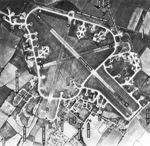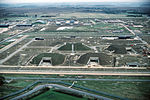Little Catworth Meadow
Sites of Special Scientific Interest in Cambridgeshire

Little Catworth Meadow is a 5.2-hectare (13-acre) biological Site of Special Scientific Interest between Catworth and Spaldwick in Cambridgeshire.The meadow is traditionally managed grassland on calcareous loam, which is rare in Britain. It has mature hedgerows and it has a rich variety of plants such as salad burnet, dropwort, great burnet, green-winged orchid and adder's-tongue fern.The site is private land with no public access.
Excerpt from the Wikipedia article Little Catworth Meadow (License: CC BY-SA 3.0, Authors, Images).Little Catworth Meadow
Church End, Huntingdonshire Catworth
Geographical coordinates (GPS) Address Nearby Places Show on map
Geographical coordinates (GPS)
| Latitude | Longitude |
|---|---|
| N 52.341 ° | E -0.382 ° |
Address
Church End
Church End
PE28 0PD Huntingdonshire, Catworth
England, United Kingdom
Open on Google Maps








